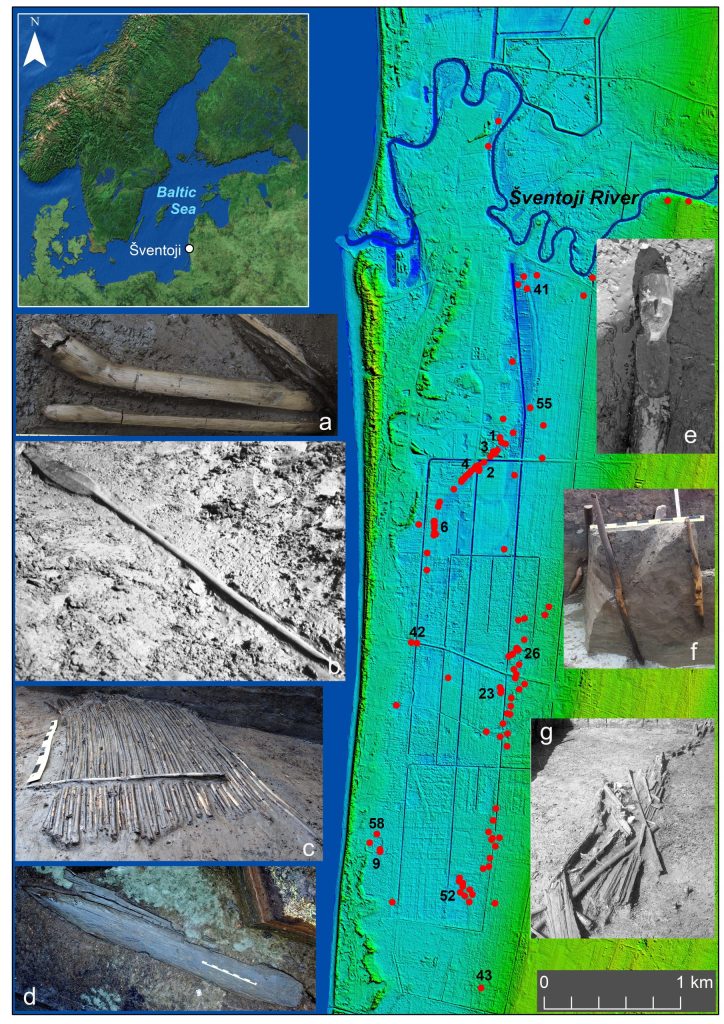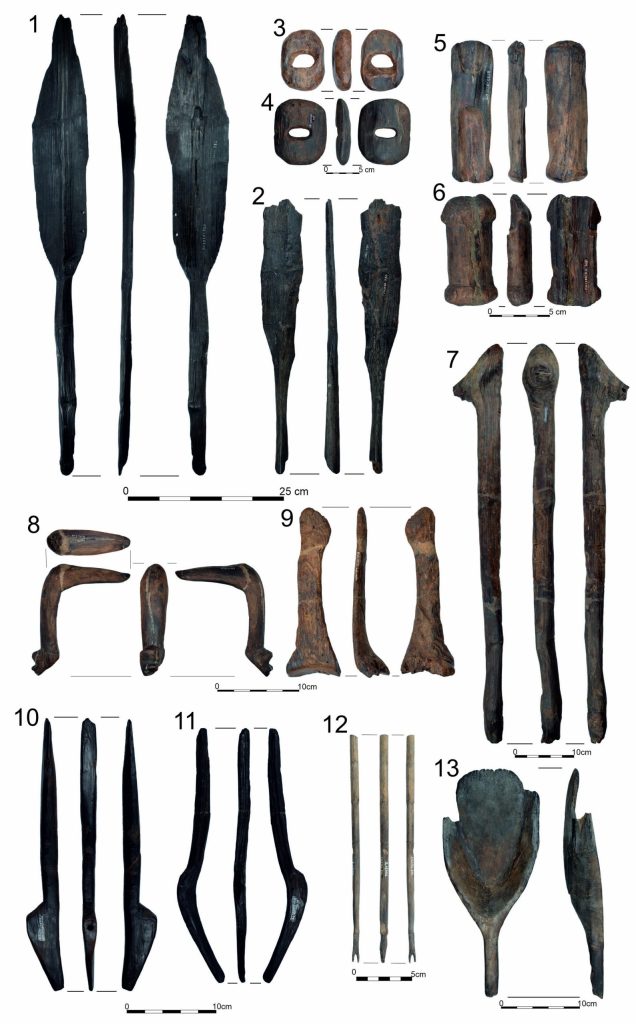About project
Plant materials played a key role in the daily life of Stone Age hunter-gatherer communities. Unfortunately, such sources have rarely been preserved to the present day. However, a notable exception in northeastern Europe is the complex of sites in Šventoji in Lithuania (Fig. 1), dated to the 4th and early 3rd millennium BC. An extraordinary collection of wooden artefacts was discovered here, comprising thousands of objects and their fragments, including fishing structures, a dugout canoe, and a famous wooden statue of an idol. Alongside these were numerous smaller objects, such as oars, floats for nets, fish spears, bows, arrows, various types of containers, axe handles, and hammers, totalling over 530 items (Fig. 2). These finds are probably the most extensive collection of artefacts associated with Stone Age hunter-gatherer-fisher communities in Europe. In addition, a unique collection of plant fibre products numbering hundreds of specimens was discovered at the site in Šventoji, including well-preserved ropes for various purposes, fishing nets and mats.
The PARTS project has two main goals: archaeological, contributing to a better understanding of human societies in the Stone Age, and methodological, referring to the need to develop a correct methodology for researching ancient products made of plant materials.
At the archaeological level, the main goal is to build a comprehensive knowledge of producing and using products made of plant materials (wood and plant fibres) by hunter-gatherer-fisher communities inhabiting the Eastern Baltic Lowland in the middle Holocene. We want to deepen our knowledge of (1) the importance of the type of raw material in the production of wooden and other plant objects, (2) techniques and tools used to make objects from wood and plant fibres, (3) ways of using different wooden objects and plant fibre products, (4) the role of stone (not flint) artefacts in the processing of plant materials, and (5) the role of plant materials in everyday life of hunter-gatherer-fishermen from the middle Holocene.
From a methodological perspective (level 2), the project’s main objective is to formulate the foundations of a methodology for the trace analysis of wooden artefacts, which will be adapted to their unique features, with particular emphasis on the research procedure aimed at interpreting their function. Unlike the case of stone and bone products, no criteria for the trace analysis of wooden artefacts have been developed so far, considering their specificity. This aspect of the research conducted in the project raises many important questions, such as to what extent the methods developed for microscopic analysis of stone and bone objects can be applied to wooden artefacts. What additional criteria and procedures are necessary to conduct a reliable and correct trace analysis of prehistoric wooden artefacts? Moreover, during our research, we will thoroughly analyze the significance of post-depositional processes (affecting the monument after its deposition in the ground) and the conservation process on technological and usage traces created on wooden objects.

Project funded by the National Science Center (NCN) in Cracow (Poland) no. N 2024/52/L/HS3/00029 and the Research Council of Lithuania (LMT) and realise in collaboration between the Nicolaus Copernicus University in Toruń, Lithuanian Institute of History and the National Museum of Lithuania.

